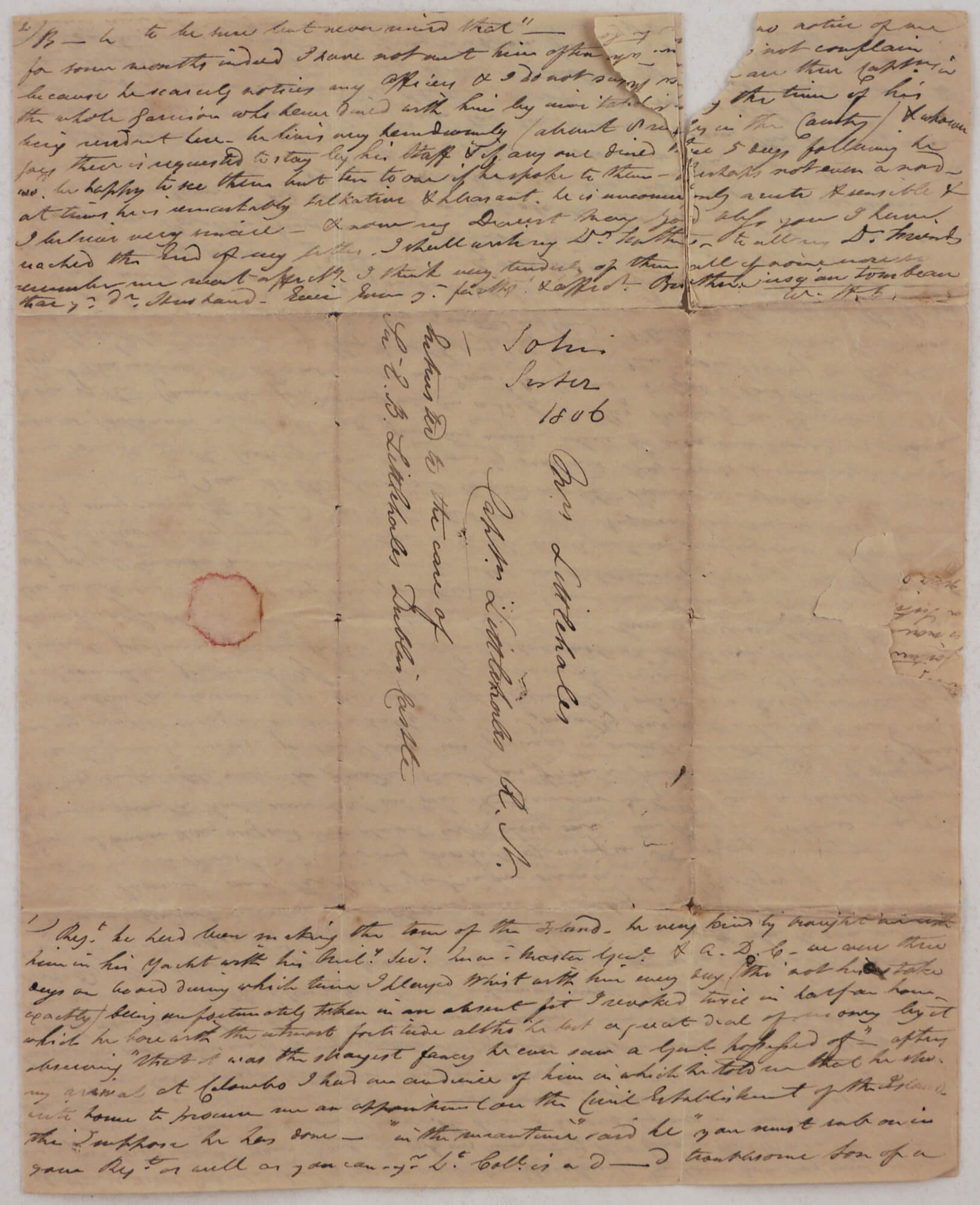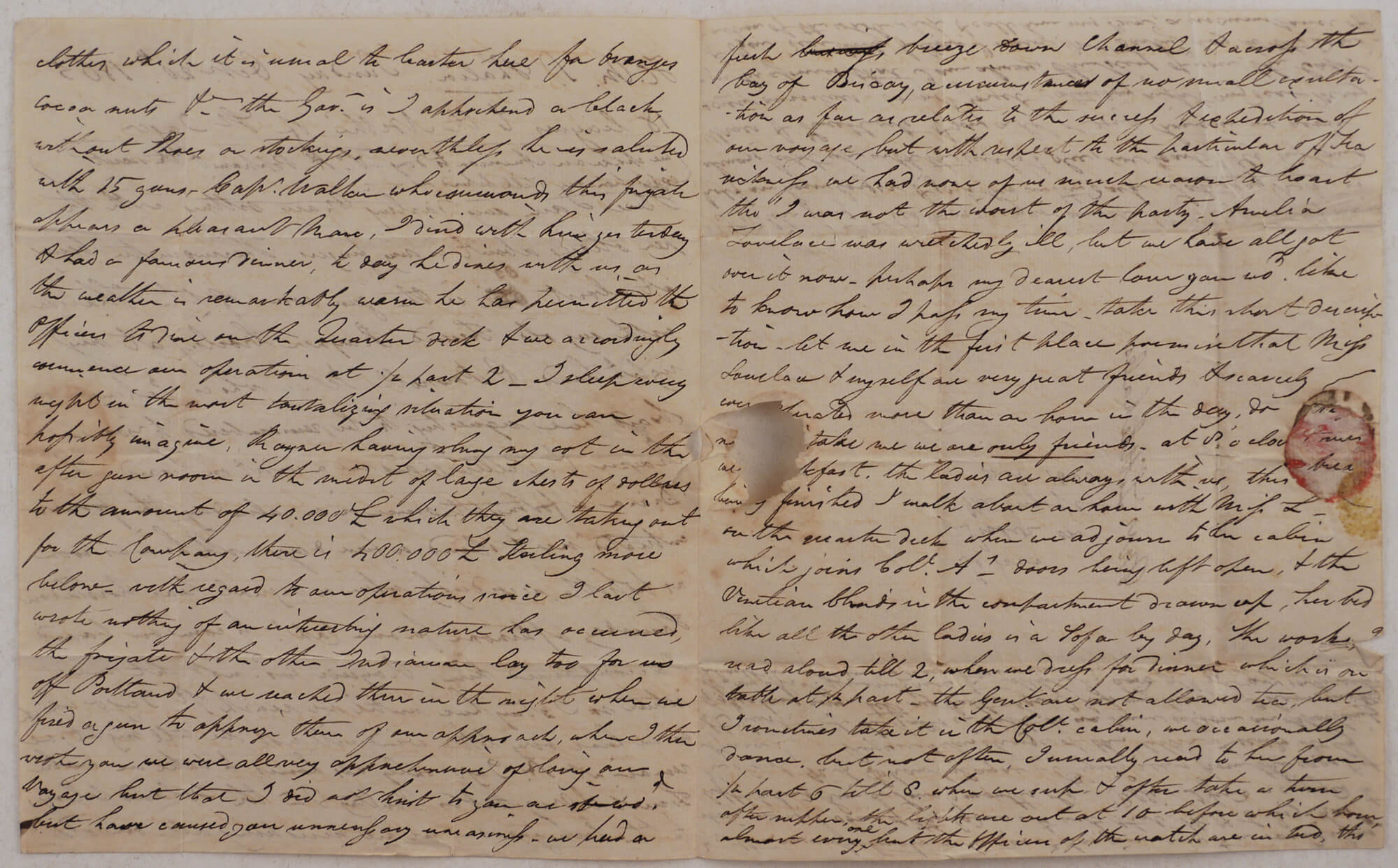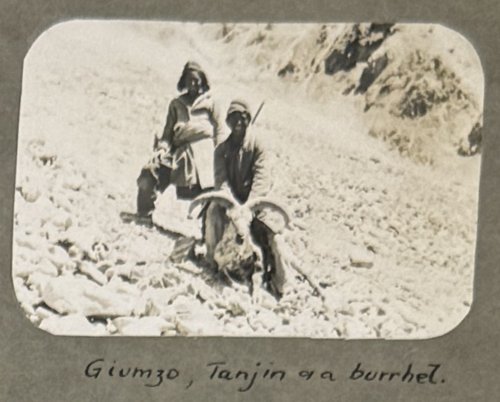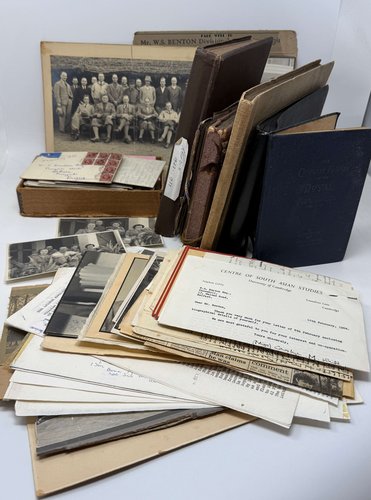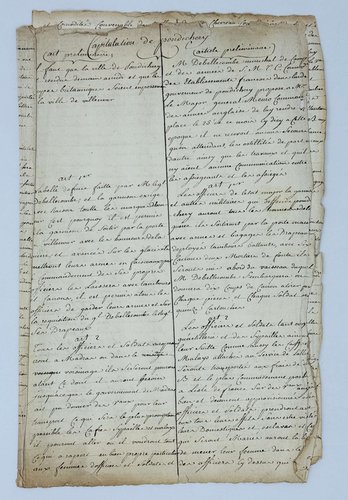

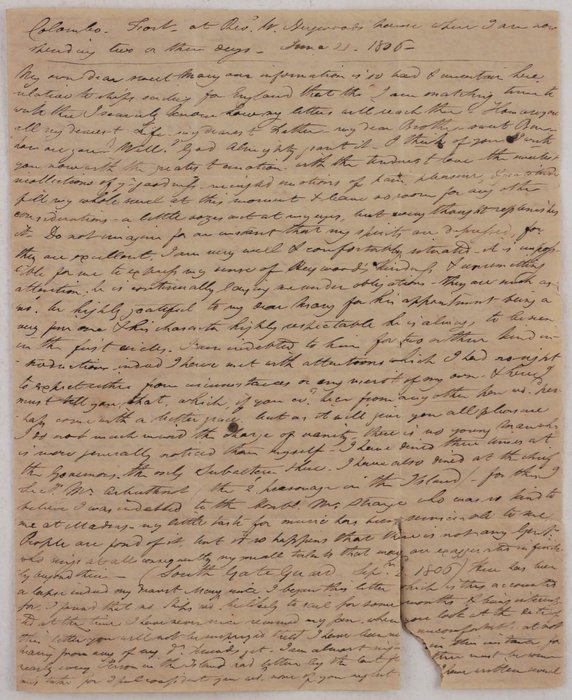



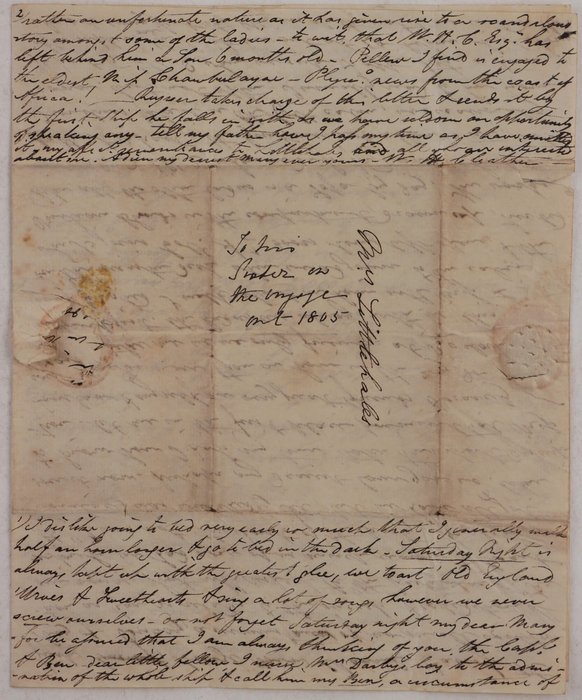
#M53
1805-1806
HMS Thalia, “18 leagues to the North of St. Jago”, 20 October 1805 and Colombo Fort, 21 June (completed 2 September) 1806. Both Octavos (ca. 23x18 cm and 25x20 cm). Each 3 ½ pp. Both addressed and sealed on the last pages. Brown ink on watermarked laid and white paper. Fold marks, both letters with minor holes on the 4th pages after opening, affecting several words; second letter with tears and minor holes on folds, but overall very good letters.
Two extensive letters giving an interesting firsthand account of the early British rule in Sri Lanka (the British occupied former Dutch possessions on the island only ten years earlier, in 1795). The first letter describes Cleather’s voyage to Ceylon from England on board HMS Thalia, with the notes on the heat of the gun room‚ the frigate’s captain Walker, Santiago Island (Cape Verde) where they got fresh supplies and water, social life on board the ship et al. “I sleep every night in the most tantalizing situation you can possibly imagine, Rayner having strung my cot in the after gun room in the midst of <…> chests of dollars to the amount of 40.000 £ which they are taking out for the Company, there is 400.000 £ standing more below.”
The second letter completed almost a year later gives an inside look into the life of British military and civil society on Ceylon, shortly after the end of the First Kandyan War (1803-1805). Cleather praises the Colombo garrison’s chaplain Reverend W.H. Heywood in whose house he started writing the letter, notes that he has dined with the “Chief Secy. Mr. Arbuthnot (the 2nd personage in the Island),” and mentions “innumerable” balls and suppers to which “I am constantly invited.” His regiment “is stationed about ten miles from the Fort <…> I have a small house but very comfortable near the parade & not far from a pretty little Cot.[tage] of Heywoods where he generally resides – for this I pay two guineas a month (nothing here).” Cleather mentions that the Regiment which consists of sepoys trains a lot because it is expected to be reviewed shortly; notes on his relation with his colleague officers – Lieut.-Col. T.W. Kerr who “has an unfortunate disposition to talk scandal,” Fort Adjutant Mr. Stewart, officers wives and daughters and others. “I do not much …[?] the heat and have never had a day’s illness since I landed in the Island. I had no duty for two or three months at first being laid up with hurts in my legs. This is common enough & is thought nothing of, it is long since over…”
Captain W.H. Cleather of the first Ceylon Regiment, was educated at Exeter College, Oxford, and arrived in Ceylon in 1805. Through his sister Mary Littlehales (to whom the letters are addressed) he was a brother-in-law of Vice-Admiral Bendall Robert Littlehales (1765-1847), a participant of the Napoleonic Wars, and Captain Edward Littlehales (1805-1888), a commander of HMS Dolphin on the coast of West Africa during the suppression of the slave trade in the 1840s. During his career in the British Ceylon, he served in different Ceylon Regiments, was the Fort adjutant at Galle, Jaffna, and Colombo. He took part in military actions during the Uva Rebellion (1817-1818) and for many years served as Deputy Judge Advocate in Ceylon.



